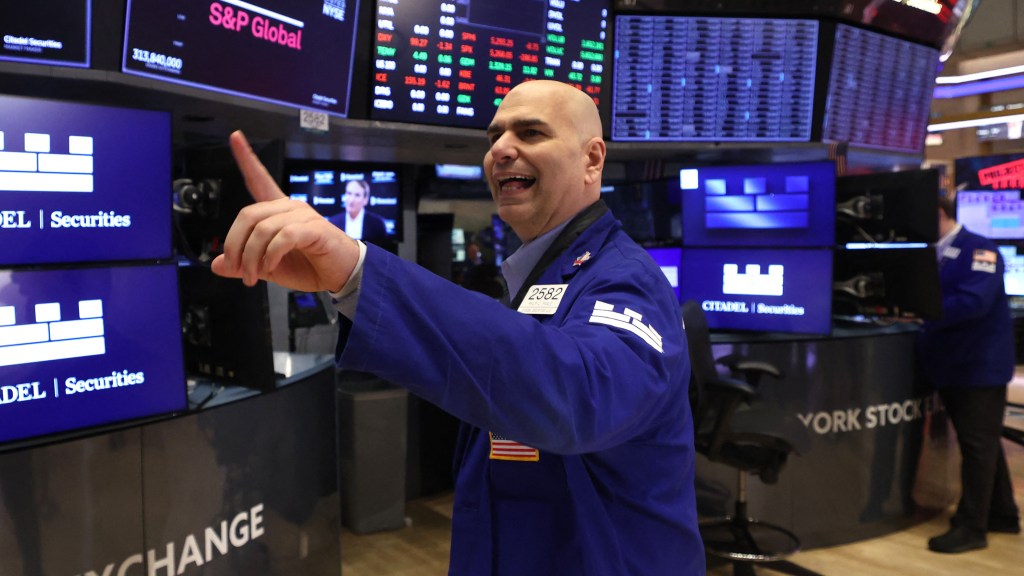Are American Stocks Set for a Comeback?
This week, American stocks broke a four-week winning streak, with the S&P 500, a key US stock index, falling approximately 1.5% before markets opened on Friday. This decline occurred despite a notable recovery of about 13% following significant losses tied to President Trump’s tariff policies earlier this year.
The recent downturn was spurred by substantial tax cuts passed by the House of Representatives, projected to add trillions to the federal deficit. This fluctuation is likely to impact many UK investors, especially since US companies represent around 70% of the global stock market. Most global tracker funds typically allocate over two-thirds of their assets to US markets, and conventional pension funds often invest 40% to 50% in US equities.
Looking ahead, what does the future hold for US stocks? Is now the right time for investors to jump in?

Current Market Dynamics
The US has driven investor growth for over a decade, with the S&P 500 surging 180% in the past ten years, compared to just 24% for the UK’s FTSE 100. Factors like technological advancement, low-interest rates, and innovation in artificial intelligence have contributed to the success of major American corporations.
Thomas Becket from Canaccord Wealth states, “US equities have been the leading option for investors for many years following the financial crisis. This is largely due to the technology sector’s profit growth, with companies like Amazon achieving remarkable investor success.”
The so-called “Magnificent Seven” tech companies—Alphabet (Google’s parent), Amazon, Apple, Meta Platforms (Facebook), Microsoft, Nvidia, and Tesla—dominate the landscape. Richard Hunter from Interactive Investor notes that these companies account for around one-third of the S&P 500 and 20% of the MSCI World Index, which means most investors are heavily invested in these stocks.
Valuation Concerns
Despite recent gains, the US market—especially the Magnificent Seven—appears overvalued. A stock is deemed overvalued when its market price surpasses its actual worth based on earnings, revenue, and growth potential.
While this doesn’t necessarily spell disaster, overvalued stocks can be more susceptible to fluctuations. Even a minor earnings setback can lead to a significant decline in share prices. Larger issues or an overall market correction could cause substantial losses.
Laith Khalaf from AJ Bell advises examining the S&P 500’s Cape ratio, which averages earnings over a decade to smooth out fluctuations. “The Cape ratio is currently near historic highs,” Khalaf elaborates, “indicating a potential for lower future returns based on historical trends.”
This ratio was only higher during the late 2021 boom and during the dotcom bubble in the late 1990s, which ended with market corrections.
Exploring Other Investment Avenues
Analysts suggest that there are viable investment opportunities beyond the Magnificent Seven. Ben Yearsley from Fairview Investing advises separating these high-value companies from the rest of the US market. He notes that while the Magnificent Seven are overvalued, the broader market aligns more closely with global indices.
Yearsley believes that if the US economy sees a boost from potential tax cuts, smaller and mid-cap stocks could benefit. He recommends considering equal-weighted trackers to mitigate overexposure to tech giants.
Hunter concurs, asserting that more sectors could thrive if economic conditions remain stable. He mentions that a recent downturn in the Magnificent Seven allowed other segments of the S&P, which he refers to as the “S&P 493,” to rise 5%. Notable performers include utilities, financials, and industrials, with companies like NRG Energy up 74% year-to-date.
The AI Boom and Its Risks
The generative artificial intelligence surge has significantly increased the value of US tech stocks, but it also introduces risks. Khalaf warns, “While there’s potential for profit in AI, it won’t be equally shared. The danger lies in AI possibly disappointing revenue expectations for certain tech firms, making it challenging to identify which will emerge as winners.”
Investing in AI is also becoming more capital-intensive due to the high costs associated with developing and running AI models. Alphabet CEO Sundar Pichai has indicated that underinvesting in AI is riskier than overspending, placing strain on company finances.
Interestingly, the primary beneficiaries of the AI surge might not be American firms. Hunter points out that Chinese company DeepSeek released a new AI product at significantly lower costs than typical US offerings, potentially foreshadowing more competitive alternatives.

Ongoing Trade Challenges
Although the market seems to have adjusted to the notion that President Trump’s trade policies may not significantly impact the global economy, uncertainties still loom. Hunter cautions, “There are lingering doubts; the current truce with China is temporary, and the long-term effects remain to be seen.”
Susannah Streeter from Hargreaves Lansdown shares this perspective, noting that as the excitement around the recent US-China trade agreement diminishes, apprehension about lasting trade relationships could lead to renewed pressure on stock values.
Exploring Broader Investment Options
For those looking to reduce their US investment exposure, numerous alternatives exist. Khalaf suggests diversifying into regions such as the UK, Europe, Japan, or emerging markets. Investors could consider affordable tracker funds for their portfolios.
Additionally, active funds with a lower US weighting than global markets may be appealing, although they typically carry higher costs. Some options include the Stewart Investors Worldwide All Cap fund or STS Global Income and Growth trust.
Yearsley recommends focusing on Asia for growth, emphasizing that with potential shifts away from globalization, the region’s younger populations and favorable market conditions make it an attractive option.
Becket advocates for a balanced approach, suggesting a moderate overweight in Europe and the UK, alongside a slight underweight in US equities. However, he warns against dismissing US stocks entirely, noting that they still contain promising opportunities, particularly in technology and healthcare sectors.
“With world-renowned brands and companies poised for strong growth, the US market remains a key area for investors to consider,” he stated. What are your thoughts on investing in the US stock market? Share your opinions in the comments below.




Post Comment